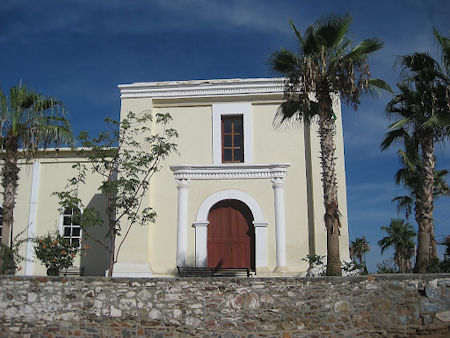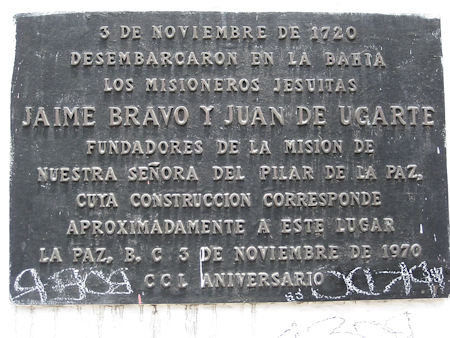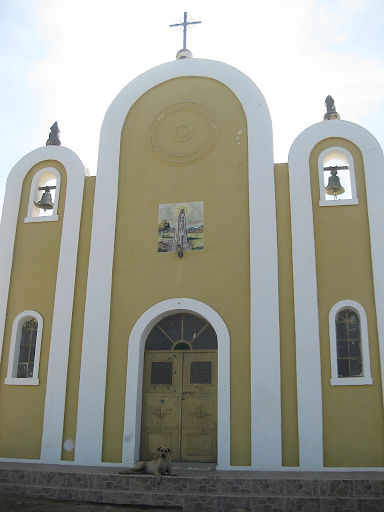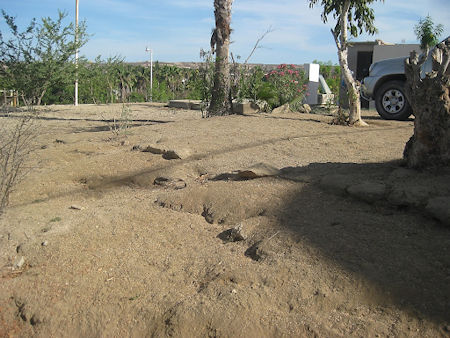 |  |
By David Kier

Some of what makes Baja California mission history interesting might include the many unusual facts about the missions. Those facts were a prime motivator for me to write Baja California Land of Missions. That was my way to help solve some mysteries or inconsistencies in the history. This is especially true with the story of the La Paz mission.
Mission La Paz, officially called Nuestra Señora del Pilar de la Paz was founded as the seventh California mission on November 3, 1720. It was established at a spring near the shore of La Paz Bay. The mission had never prospered as well as hoped and that may have been primarily due to the fact that no Indian tribe lived there. It was only visited by various members of the Pericú and Guaycura Indians. Not a single piece of the mission ruins remains today, and the exact location is unknown. That mission site is likely under some modern street or building, in the city of La Paz. A plaque on a La Paz side street marks a location but historians are convinced that it is not correct.

As with most missions, Pilar de la Paz had visitas. Visita was the word for a satellite outpost chapel that the missionary would visit when he traveled out from his mission. In 1725, a visita named Todos Santos was established about 50 miles south of La Paz. Todos Santos was an excellent agricultural location and prospered well as a visita. By 1733, it was decided to elevate Todos Santos from visita to mission, with its own priest and a financial pledge from a benefactor.
This new mission was founded in August of 1733 with the official name of Santa Rosa de las Palmas. Santa Rosa was the thirteenth California mission, and it was indeed unlucky. The Pericú Revolt broke out the next year. Mission Santa Rosa was destroyed, along with the other three missions of the south; Santiago, San José del Cabo, and La Paz. These missions remained vacant until the region was brought back into control after more than two years. The four missions were rebuilt but things were different for them with new staffing, relocations, and a tense atmosphere due to the murder of two Jesuit priests, a soldier, and many women and children at the hands of the violent mob. A fort called the Presidio of the South was established at San José del Cabo in order to have more soldiers stationed in the region.

In 1748, the Jesuits made some big changes as it was decided to close two of the four southern missions. Mission San José del Cabo was reduced to being only a visita of Mission Santiago and the presidio there was moved to Todos Santos. The mission at La Paz Bay was moved to Todos Santos, where the mission of Santa Rosa had been. Santa Rosa, the bad luck mission, was no more. When missions are moved, the new location name is often applied over the mission’s official name. The mission was still ‘Pilar de la Paz’ but being now at Todos Santos meant it was typically called that, instead.
In 1768, the Jesuits in California were replaced by the Franciscans. San José del Cabo was returned to full-mission-status. Over at Todos Santos, the mission there would only be known by that name and this habit continued when the Dominicans took over the peninsula mission duties. After 1773, The Franciscans were solely in charge north of the peninsula, a land called Nueva or Alta California. The place that was called California now had a modifier to prevent confusion, so it became Antigua or Baja California.
In the spring of 1822, the people of Baja California pledged their loyalty to the newly created and independent Mexican Empire. In the next few years, the empire became a republic. The Spanish mission program was over. Because of its remoteness and concern that the Native population still required mission services, the Mexican government allowed the few remaining missions to continue operating until they were abandoned, or their priest died.

In 1825, the Dominicans moved the Todos Santos (Pilar de la Paz) mission one mile south where the church in downtown Todos Santos is today (Km. 51). The 1733 mission site now has a modern church (built in 1970) with a playground in front. Some foundation bricks by the playground may be what remains of Mission Santa Rosa and the second site of Mission Pilar de la Paz (Km. 49.5).
This has been another of the interesting if not just a bit confusing stories of Baja California history.
About David
David Kier is a veteran Baja traveler, author of 'Baja California - Land Of Missions' and co-author of 'Old Missions of the Californias'. Visit the Old Missions website.

Excellent service! Michelle made it so easy for me to purchase a 6 month mexican policy for all of...

Michelle L. is the best Client Care Specialist! I originally purchased a policy a few months ago...

Great service, EZ and reasonbably priced. Been using Baja Bound for many years now. Great company...